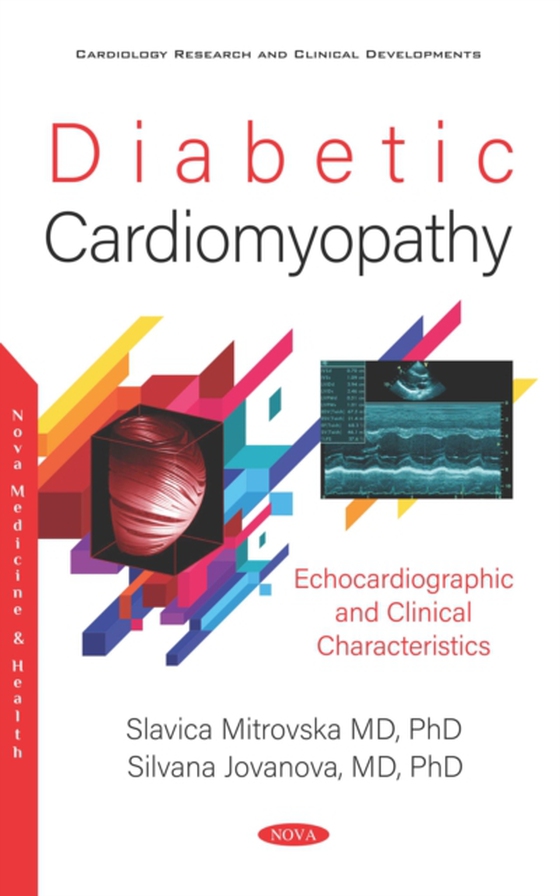
Diabetic Cardiomyopathy: Echocardiographic and Clinical Characteristics e-bog
2190,77 DKK
(inkl. moms 2738,46 DKK)
Background: Diabetic cardiomyopathy is defined as heart failure independent of the coronary artery, valve disease and hypertension. It has multifactorial aetiology but the pathogenesis is incompletely understood. Hyperglycemia, hyperlipidemia and inflammation with high oxidative stress lead to structural and functional alterations of the left ventricle (LV) and promote diabetic cardiomyopathy. ...
E-bog
2190,77 DKK
Forlag
Nova Medicine and Health
Udgivet
8 januar 2020
Længde
282 sider
Genrer
Cardiovascular medicine
Sprog
English
Format
pdf
Beskyttelse
LCP
ISBN
9781536169584
Background: Diabetic cardiomyopathy is defined as heart failure independent of the coronary artery, valve disease and hypertension. It has multifactorial aetiology but the pathogenesis is incompletely understood. Hyperglycemia, hyperlipidemia and inflammation with high oxidative stress lead to structural and functional alterations of the left ventricle (LV) and promote diabetic cardiomyopathy. Diastolic dysfunction is an early sign of diabetic cardiomyopathy. It has a long asymptomatic period, but with time leads to loss of contractile function. Hence, the identification of subclinical diabetic cardiomyopathy and correction of potentially modified risk factors are very important to delay the onset of heart failure. The aim: We aimed to assess the LV function in asymptomatic diabetic patients and its correlation with clinical and biochemical parameters. Study design: Cross-sectional study that includes a total number of 137 subjects. The target group consists of 72 asymptomatic normotensive patients with diabetes mellitus type 2, without coronary artery and valve disease. The control group is composed of 65 healthy subjects. Methods: All patients were subject to echocardiography (conventional 2D, M-mode, PW Doppler analysis and contemporary techniques-TDI and 2D-Speckle-Tracking Echocardiography). We evaluate LV diastolic and systolic function and its correlation with basic clinical characteristics (age, gender, BMI, BSA, waist to hip ratio, duration of diabetes) and biochemical analyses (glucose profile, lipid profile, CRP). The correlation between clinical, biochemical and echocardiographic parameters was assessed by the Pearson Product Moment of Correlation. A p-value of less than 0.05 was considered to indicate significance. Results: Analysis of deformation identify the greatest number of subjects with abnormal myocardial mechanics (n=45, 62%). Wilcoxon Matched Pairs Test showed a statistically significant difference between the groups regarding the prevalence of diastolic dysfunction, in each imaging modality-PWD and TDI (Z=2.3, p=0.01; Z=2.9, p=03). There were strong negative correlations between clinical, biochemical and echocardiographic parameters of PW Doppler and 2D Speckle-Tracking Echocardiography and strong positive correlation with TDI. Conclusion: Doppler echocardiography is a valuable imaging technique for identifying LV dysfunction in asymptomatic patients with diabetes, and is an important part of the diagnostic algorithm in diabetic cardiomyopathy. Novel Doppler-echocardiographic techniques as are Tissue Doppler Imaging and Speckle-Tracking Echocardiography show superiority over other echocardiographic methods, regarding the early detection of LV functional abnormalities in the asymptomatic diabetic population. Its introduction in daily routine will contribute to the timely initiation of treatment of risk factors, to prevent the development of heart failure.
 Dansk
Dansk

